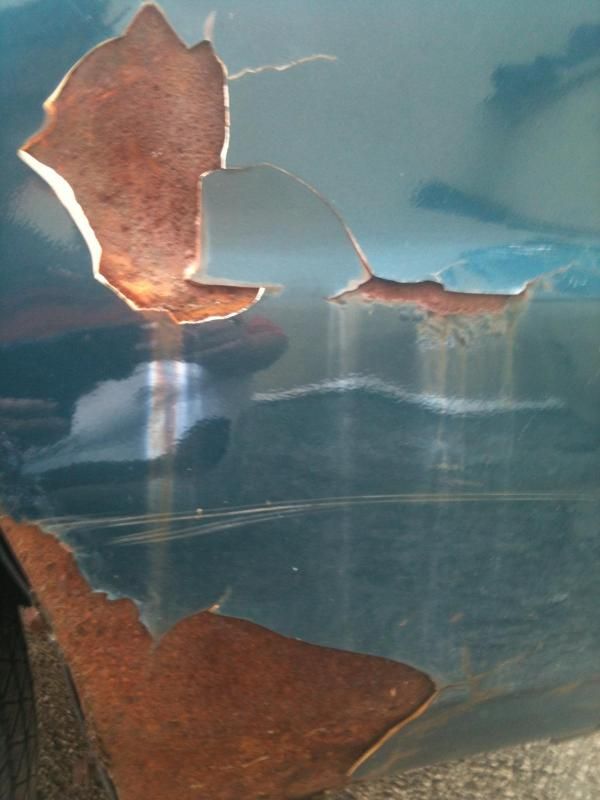Hey folks, Hoonigan here, and I approach you today with a question regarding bodywork--specifically, rust removal and repair.
Now, earlier this month, I took ownership of a 1994 Corolla DX Wagon, whom I christened Wendy. I'm her third owner, and on the day I got her, one thing that immediately caught my attention was this problem on the driver's side rear quarter panel:

As one can see, this is not an insignificant amount of rust. With fall and winter just around the corner, removing this rust and repairing it is one of my highest priorities as a first-time car owner on a budget. The problem is, I've never done any bodywork on a car before, and I would like to avoid having to send Wendy to the body shop if I can help it, as I would be losing my only current means of transportation, even if just temporarily (I work every day of the week, and I don't get weekends off).
Now I've been doing a little bit of research, and one item that keeps popping up is Loctite Naval Jelly. However, I'm fairly sure that Naval Jelly alone will not be enough to get rid of the rust I can currently see (to say nothing of what may be hidden underneath). So I created this thread to ask those experienced in moderate to severe rust repair-- what other methods and tools can I place at my disposal to take care of this glaring issue?
Now, earlier this month, I took ownership of a 1994 Corolla DX Wagon, whom I christened Wendy. I'm her third owner, and on the day I got her, one thing that immediately caught my attention was this problem on the driver's side rear quarter panel:

As one can see, this is not an insignificant amount of rust. With fall and winter just around the corner, removing this rust and repairing it is one of my highest priorities as a first-time car owner on a budget. The problem is, I've never done any bodywork on a car before, and I would like to avoid having to send Wendy to the body shop if I can help it, as I would be losing my only current means of transportation, even if just temporarily (I work every day of the week, and I don't get weekends off).
Now I've been doing a little bit of research, and one item that keeps popping up is Loctite Naval Jelly. However, I'm fairly sure that Naval Jelly alone will not be enough to get rid of the rust I can currently see (to say nothing of what may be hidden underneath). So I created this thread to ask those experienced in moderate to severe rust repair-- what other methods and tools can I place at my disposal to take care of this glaring issue?
